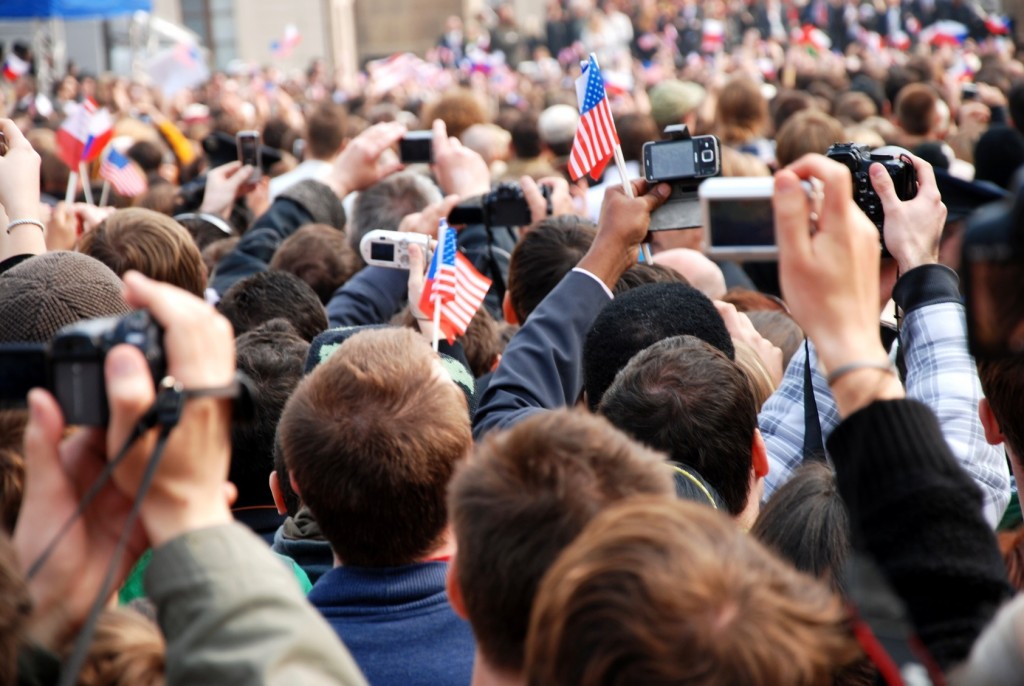This piece first appeared on The Drum.
As social networks reshape how news is told and how it is shared, their impact goes well beyond those of news consumption. Practicing journalism has changed because of this dynamic, and now, in addition to traditional journalists, “citizen journalists” have the means and channels to report & deliver news.
While at first glance, citizen journalism may seem like a threat to traditional reporting, in fact, these citizen journalists help augment traditional news telling. Here are three ways these amateur reporters broaden and deepen the coverage possible on any story.

1. Any topic is fair game.
Two-thirds of residents in the UK own a smartphone. With a still camera, ability to capture video, and internet connection in the majority of citizens’ hands, virtually anyone can become a reporter, at any time. This means big events such as terror attacks or political elections, as well as smaller, but yet newsworthy events such as regional sports championships, traffic jams on the highway, and the local high school play can all be documented and distributed as news by everyday citizens via social media. So even if you don’t have the bandwidth to cover all the news in depth, it’s likely a citizen journalist has documented it on one or more social network.
2. Immediacy. Speed of reporting. Eyewitness reports.
While traditional reporters aim to learn about and cover a breaking story as quickly as possible, it is physically impossible for publishers to have reporters everywhere, all the time, and to be able to capture breaking news as soon as it happens. Citizen journalists create the opportunity to capture and report on news as it happens. A story of a plane landing on the Hudson River in New York in 2009 was first broken by a bystander on Twitter. Eyewitness reports from people trapped in the building during the San Bernardino shootings in 2015 were posted to social media while the situation unfolded. While not all reports may be accurate, the abundance of posts, pictures, and commentary from citizen journalists provides a near-real- time report of breaking news or events as they unfold that keeps audiences informed and engaged in the outcome of the story.
3. Regional and local focus.
The rise of digital publishing has made access to news stories easier that ever. A reader in Birmingham can read about the US political elections or a hurricane that devastates an island in the South Pacific as easily as they learn about which local football club won last night’s match. But ubiquitous access to news has also cast a shadow over local news, as the boundaries for capturing readership have eroded beyond the confines of where a print publication can be delivered. Citizen journalists capturing & posting pictures to Instagram of a school renovation going on in their neighborhood, posting YouTube videos of a building on fire near their work, or tweeting about a traffic jam they’re stuck in provides local coverage of news that might otherwise go unreported.

With all of this news-related content generated via social networks, how can traditional publishers make the most of citizen journalism? By finding and filtering the best social posts and publishing them on your site, either to complement an existing report or provide additional content you would be hard pressed to report on and publish otherwise.
But the amount of social content to sift through to find the best and right social content is staggering – an average of 6,000 tweets are posted every second on Twitter alone. Manually searching for and curating all of this content is not only costly, but slow. Social media curation tools provide automation, algorithms, and intelligence that help find, filter, and publish safe, relevant, and real-time social streams, pulling only the best content from the social networks onto your site.
For publishers, social media curation enables:
- A more complete story – incorporate the voice of the crowd alongside your editorial reporting to get up to the minute, on the scene reports and commentary via citizen journalists
- Greater perceptions of the reader friendliness of your articles – 45% of millennials surveyed recently by Crowdynews felt articles were more reader friendly when social media content was included
- Better engagement – relevant social media content accompanying articles helps readers stay more engaged with your article and on your site longer
We’ve outlined a few more ways Citizen Journalists differ from Traditional Journalists in this infographic. Download it yourself to better understand the differences.